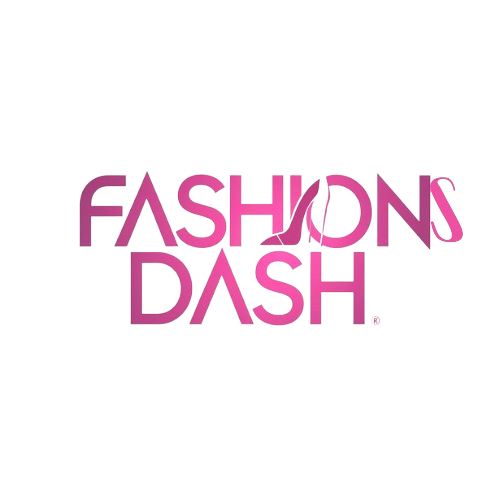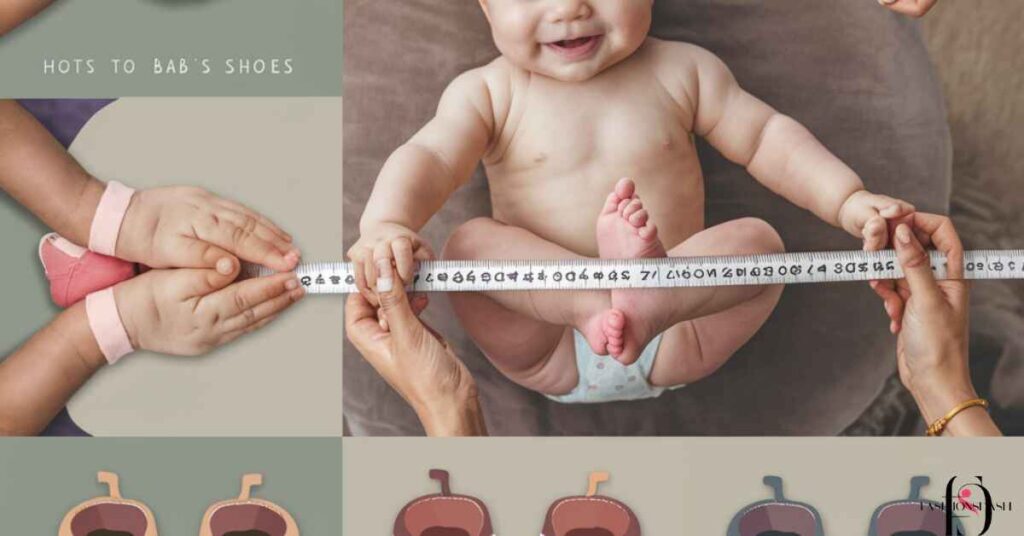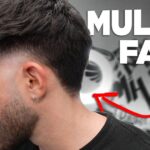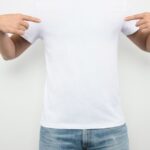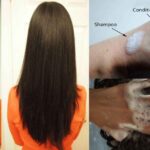Measuring a child’s feet for footwear is crucial for their consolation and foot health. Start by accumulating a ruler or measuring tape, paper, and a pen.
Have the infant sit or lie down evenly. Hint round one foot at the paper, ensuring the pen is perpendicular. Degree the duration from the heel to the longest toe and the width on the widest factor.
Discuss with the shoe logo’s length chart, including round zero.5 inches for increase. in the end, strive on footwear, ensuring consolation and room for toe motion.
The Best Baby Shoes For Each Stage
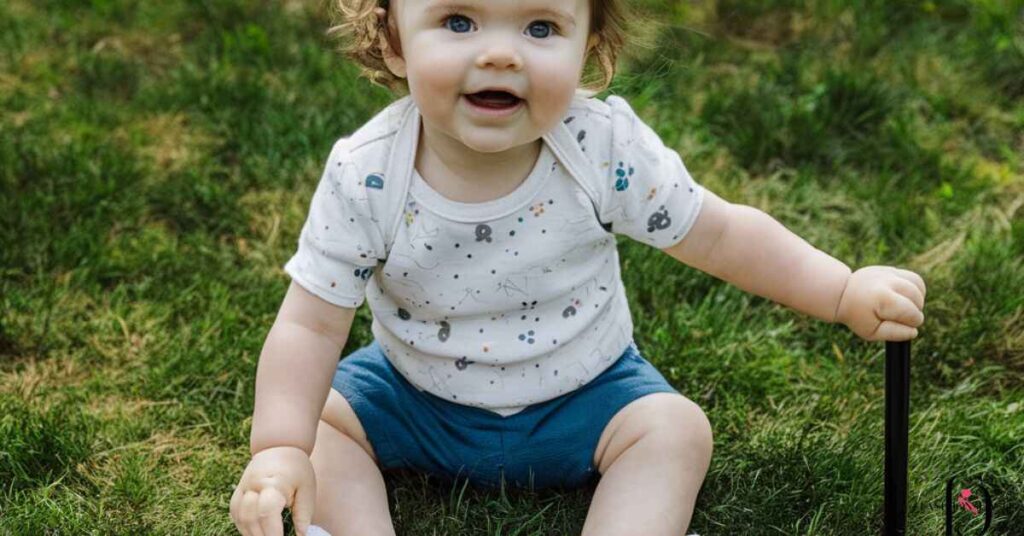
Choosing the right shoes for your baby’s development is essential. Here’s a breakdown of the best shoes for each stage.
Newborn to Pre-Walkers (0-6 months):
- Soft-soled booties or socks: These provide warmth and protection without restricting natural foot movement. Look for breathable materials like cotton or bamboo.
Crawling Stage (6-9 months):
- Grip socks or soft-soled shoes: As babies start to crawl, they need shoes with non-slip soles to prevent sliding. Flexible shoes with grip help them gain traction.
Learning to stand (9-12 months):
- Lightweight, flexible shoes: Choose shoes with soft, flexible soles that mimic barefoot walking. Look for adjustable closures like Velcro or elastic to accommodate chubby feet.
First Steps (12-18 months):
- Stable, supportive shoes: Opt for shoes with sturdy yet flexible soles to support the feet as they transition to walking. High-top styles provide ankle support and stability.
Confident walking (18-24 months):
- Toddler sneakers or sandals: At this stage, shoes with durable rubber soles and cushioning offer protection and support for active toddlers. Choose breathable materials for comfort.
Running and playing (24+ months):
- Athletic shoes or sturdy sandals: As toddlers become more active, they need shoes that can keep up with their adventures. Look for features like reinforced toes and secure closures for safety and durability.
Remember, it’s essential to regularly check the fit of your baby’s shoes as their feet grow rapidly during these early stages. Opt for shoes that promote natural foot development and provide comfort and support for each milestone.
Read This Blog: WHY DOES MY FACE BURN AFTER SKIN CARE
Best Shoes For Newborns
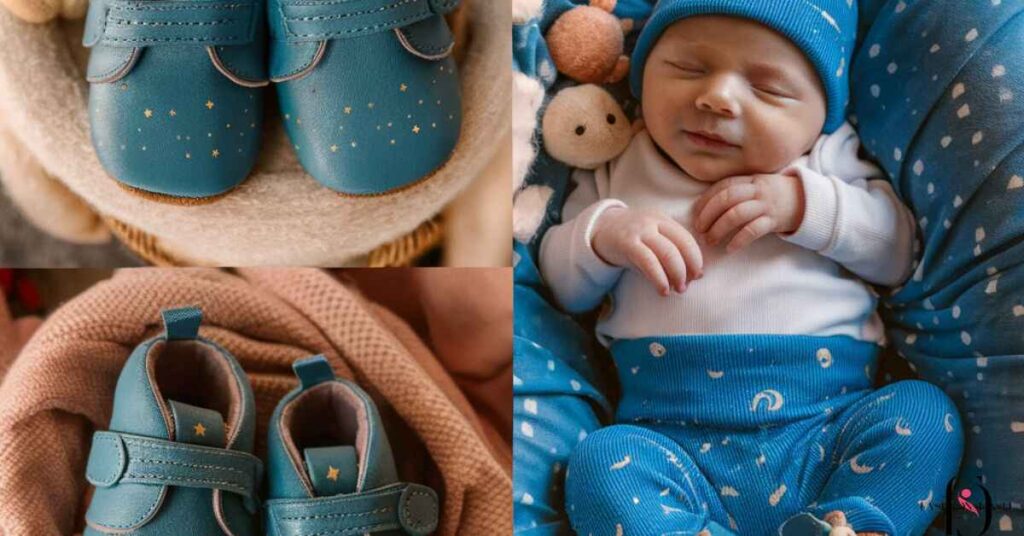
For newborns, the nice footwear is absolutely no shoes at all! Even as it is lovely to assume little footwear on tiny toes, professionals typically propose that newborns move barefoot or put on smooth booties or socks in place of based shoes. Here’s why.
- Herbal improvement: Newborns’ toes are still growing, and carrying shoes can restriction their natural movement and increase.
- Sensory improvement: Going barefoot or wearing soft booties lets in newborns to feel exceptional textures and surfaces that are vital for sensory development.
- Consolation and versatility: soft booties or socks provide warm temperature and safety without constricting the toes. They permit the feet to move freely and easily.
- Ease of motion: Newborns spend plenty of their time mendacity down or being carried, so shoes aren’t important for taking walks or aid.
Whilst choosing booties or socks for newborns, choose breathable substances like cotton or bamboo to preserve their feet relaxed. Look for patterns with stretchy cuffs to keep them securely on the ft. As your toddler grows and becomes more active, you can step by step introduce shoes designed for their particular developmental stage.
Also Read This Blog: WHY ARE HOKA SHOES SO EXPENSIVE
Ginger Baby Moccasins
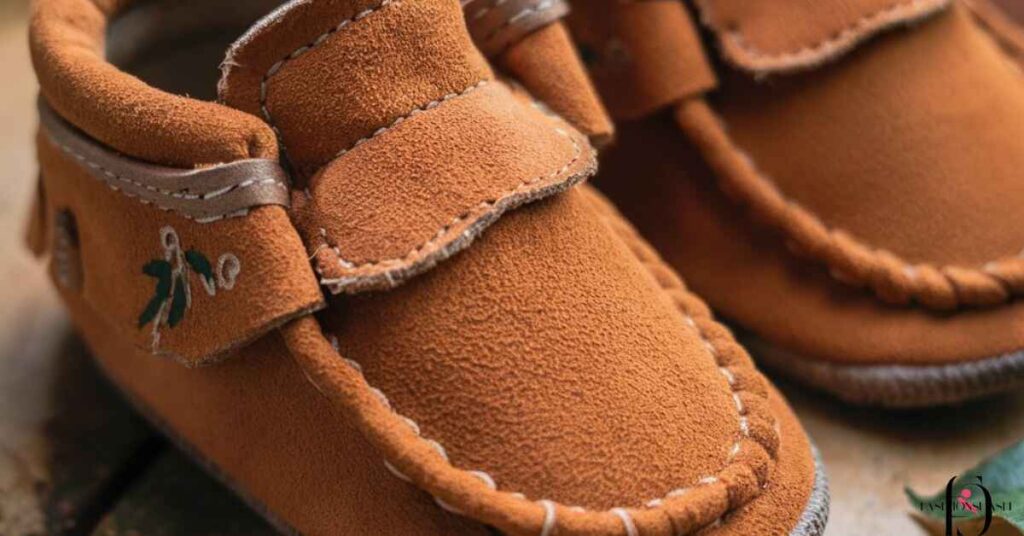
Ginger Baby Moccasins are adorable and practical footwear for infants and toddlers. These moccasins are typically made from soft, high-quality leather or suede, providing comfort and flexibility for little feet. Here are some key features and benefits.
- Soft and Flexible: The leather or suede construction of Ginger Baby Moccasins allows for natural foot movement, promoting healthy foot development in infants.
- Easy to Put On: With elasticized openings or adjustable closures like Velcro, Ginger Baby Moccasins are easy to slip on and off, making them convenient for parents and comfortable for babies.
- Stylish Design: Ginger Baby Moccasins come in a variety of colors and styles, from classic neutrals to fun patterns, allowing parents to choose a pair that matches their baby’s personality and wardrobe.
- Durable Construction: Despite their softness, Ginger Baby Moccasins are often well-made and durable, standing up to the rigors of babyhood.
- Versatile Wear: These moccasins are suitable for both indoor and outdoor wear, providing protection for little feet without sacrificing comfort.
- Non-Slip Soles: Some Ginger Baby Moccasins feature non-slip soles or grip dots, providing traction for early walkers and crawlers.
Overall, Ginger Baby Moccasins combine style and functionality, making them a popular choice among parents looking for cute and practical footwear for their little ones.
Best Shoes for Infants
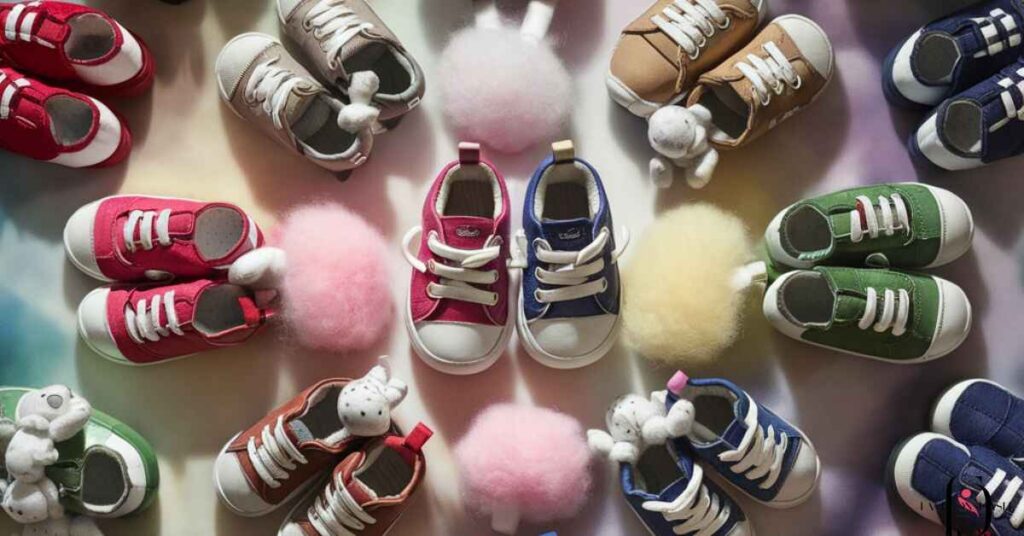
For babies, the nice shoes prioritize comfort, flexibility, and ease of use. Here are a few top alternatives.
- Gentle-soled Booties: gentle-soled booties made from breathable substances like cotton or fleece is first-rate picks for newborns and younger infants. They provide warmth and protection without restricting herbal foot motion. Search for booties with elasticized cuffs or adjustable closures for a at ease in shape.
- Grip Socks: Grip socks with rubberized soles are ideal for toddlers who are beginning to discover movement via crawling or scooting. These socks offer traction on slippery surfaces while still permitting the ft. to transport freely.
- Flexible leather Moccasins: leather moccasins with tender, bendy soles are excellent for toddlers who are starting to pull themselves up and cruise. They offer a chunk extra safety than socks or booties whilst still allowing for natural foot improvement.
- Live-on Booties: choose booties with stay-on capabilities like snap closures or ankle straps to save you them from slipping off wriggly little toes. This ensures that your toddler’s ft. stay warm and protected.
- Barefoot: whilst indoors, allowing toddlers to move barefoot is exceptionally recommended. It promotes healthy foot improvement, permits them to experience unique textures, and encourages stability and coordination.
- Pre-walker footwear: if you choose footwear, search for pre-walker shoes with smooth, bendy soles that mimic barefoot strolling. This footwear need to have room for feet to wiggle and grow and must not constrict movement.
In the end, the quality footwear for infants prioritizes consolation and herbal foot development even as supplying some stage of safety. As infants develop and come to be extra active, you can progressively introduce sturdier shoes designed for their developmental degree.
Black Hard Sole Moccasins
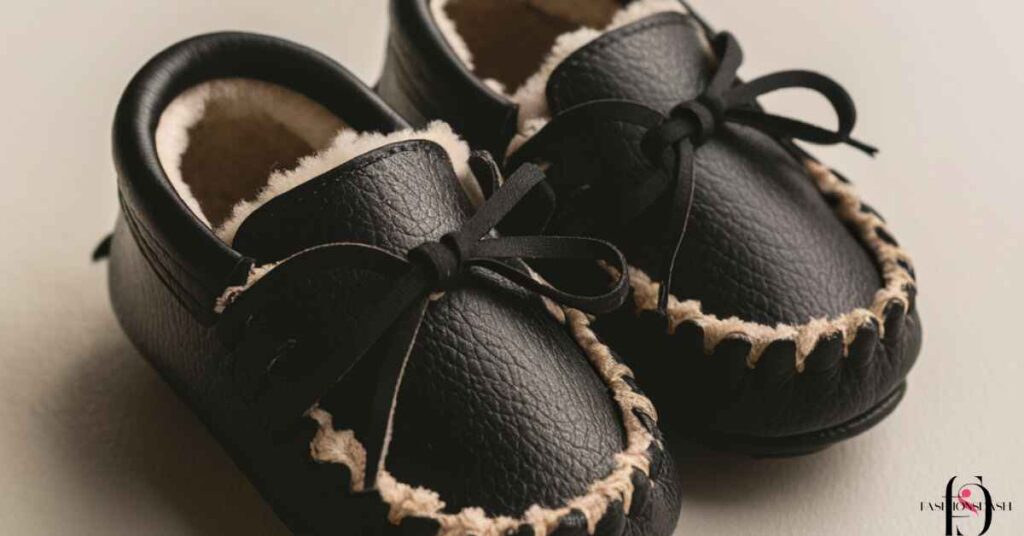
Black hard sole moccasins offer a stylish and practical option for infants and toddlers who are beginning to explore their surroundings. Here’s what makes them a great choice.
- Stylish Design: Black moccasins provide a classic and versatile look that complements a variety of outfits, making them suitable for both casual and dressier occasions.
- Durable Construction: The hard sole adds durability and protection, making these moccasins suitable for outdoor wear. They can withstand the wear and tear of daily adventures while keeping your child’s feet safe and comfortable.
- Supportive Fit: The hard sole provides stability and support for early walkers, helping them maintain balance and confidence as they take their first steps.
- Comfortable Interior: Despite the hard sole, the interior of these moccasins is often lined with soft materials like suede or faux fur, providing cushioning and comfort for little feet.
- Easy On/Off: Many black hard sole moccasins feature convenient closure systems such as Velcro straps or elasticized openings, making them easy to put on and take off, even for squirmy infants and toddlers.
- Versatile Wear: These moccasins are suitable for both indoor and outdoor use, making them a practical choice for various activities and environments.
Overall, black hard sole moccasins combine style, durability, and comfort, making them an excellent choice for infants and toddlers who are on the move.
How Baby Shoe Sizing Works
Baby shoe sizing can vary slightly between different brands and countries, but the general principles remain the same. Here’s how baby shoe sizing typically works.
- Length Measurement: Baby shoe sizes are usually determined by the length of the baby’s foot in inches or centimeters. This measurement is taken from the heel to the tip of the longest toe.
- Age Range: Some shoe brands offer size ranges based on the baby’s age, but this can be less accurate since babies grow at different rates. It’s often more reliable to use actual foot measurements for sizing.
- Size Charts: Each shoe brand typically provides a size chart that correlates foot length with the corresponding shoe size. These size charts may vary slightly between brands, so it’s essential to refer to the specific brand’s chart when determining the correct size for your baby.
- Room for Growth: It’s common practice to leave a bit of extra room (usually about 0.5 inches or 1.27 centimeters) when selecting baby shoes to accommodate for growth. Babies’ feet can grow quickly, so choosing shoes with a bit of wiggle room ensures that they won’t outgrow them too quickly.
- Width Consideration: In addition to length, some shoe brands also provide width options to accommodate different foot shapes. It’s essential to consider the width of your baby’s foot when selecting shoes to ensure a comfortable fit.
- Trying Shoes On: When possible, it’s a good idea to try shoes on your baby before purchasing, especially if you’re unsure about the sizing. Look for signs of proper fit, such as enough room for the toes to wiggle, a secure closure without being too tight, and no signs of discomfort or irritation.
By following these guidelines and referring to the brand’s specific size chart, you can find the right-sized shoes to keep your baby’s feet comfortable and supported as they grow and explore the world around them.
Frequently asked question
Whilst is the first-class time to measure my child’s feet for shoes?
Degree your child’s fit in the afternoon or night while they are barely swollen, making sure a greater accurate dimension.
What’s the most correct manner to measure child feet?
Trace their foot on a piece of paper, then degree from heel to longest toe for duration and throughout the widest component for width.
How lots extra space need to I leave in child shoes for increase?
It is encouraged to go away about half an inch (or 1.27 centimeters) of greater space to deal with growth.
Can i use age as a guide for choosing shoe length?
Even as age can be a difficult estimate, it is more accurate to degree your toddler’s feet immediately for the fine healthy.
What if my infant’s feet are special sizes?
Degree each toes and pick shoes based on the size of the larger foot to make certain a comfy match.
How frequently should I degree my infant’s toes for brand new shoes?
It’s a terrific concept to degree their toes each few months, as infants’ toes develop swiftly for the duration of the first few years.
What if my toddler is among sizes?
If your infant is among sizes, opt for the bigger length to allow for room to grow and make certain consolation.
Conclusion
Measuring your baby’s feet for footwear is vital for making sure their consolation, assist and ordinary foot health as they develop and develop. Via following simple steps like tracing their foot on paper and correctly measuring the duration and width, you can select the right-sized footwear.
Bear in mind to go away a few greater areas for growth, normally around half of an inch, and consider factors like foot form and width. Often measuring your infant’s feet and checking the fit in their shoes will help you hold them comfortable and supported at each degree of their early development. Prioritizing right shoe match units a strong basis for wholesome foot improvement and happy, lively little toes.
